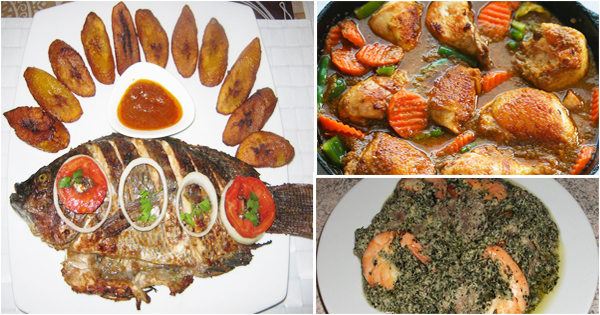Introduction: Overview of Cameroonian cuisine
Cameroonian cuisine is a blend of African, European, and Asian influences, resulting in a unique and diverse culinary experience. Located in Central Africa, Cameroon is home to over 250 ethnic groups, each with their own distinct cuisine. The country’s cuisine is known for its bold flavors, variety of spices, and use of fresh ingredients.
Common spices used in Cameroonian cooking
Cameroonian cuisine is known for its use of bold and aromatic spices. Commonly used spices include ginger, garlic, turmeric, chili peppers, black pepper, and cloves. These spices are used to add depth and complexity to sauces, stews, and soups. Cameroonians also use a unique spice blend called “poulet DG,” which is a combination of salt, pepper, and a variety of herbs and spices, used to season chicken dishes.
Heat level of traditional Cameroonian dishes
Cameroonian cuisine is generally considered to be spicy, with most dishes containing some form of heat. The level of spiciness varies depending on the dish and the region it comes from. In the northern regions of Cameroon, dishes tend to be milder, while in the western regions, dishes can be quite spicy. Popular dishes such as Ndolé, a stew made with bitter leaves and peanuts, and Fufu, a starchy side dish, are known for their spicy flavor.
Regional variations in spiciness
Cameroon is a diverse country with many different regions, each with their own unique cuisine. As a result, the level of spiciness can vary depending on the region. For example, in the western region of Cameroon, dishes tend to be spicier than those in the northern region. In the coastal region, seafood is a staple, and dishes tend to be less spicy than those in other regions.
Influence of neighboring countries on Cameroonian cuisine
Cameroon shares borders with Nigeria, Chad, Central African Republic, Equatorial Guinea, Gabon, and the Republic of Congo. As a result, Cameroonian cuisine has been influenced by the cuisines of these neighboring countries. For example, the use of chili peppers, a common ingredient in Cameroonian cuisine, is believed to have been introduced by the Portuguese, who brought the peppers to the region during their colonization of West Africa.
Non-spicy options for those who cannot handle heat
For those who cannot handle spicy food, there are many non-spicy options available in Cameroonian cuisine. Popular dishes such as Eru soup, a vegetable soup made with leafy greens and smoked fish, and Bobolo, a steamed cassava cake, are both mild in flavor. Additionally, many dishes can be customized to suit individual preferences, with the level of spice adjusted to suit the diner’s taste.
Health benefits and risks of spicy Cameroonian food
Spicy food is known to have several health benefits, including boosting metabolism, aiding digestion, and reducing inflammation. However, spicy food can also have negative health effects, particularly for those with acid reflux or ulcers. It is important for individuals to listen to their body and adjust their spice intake accordingly.
Conclusion: Final thoughts on Cameroonian cuisine and spiciness
Cameroonian cuisine is a unique and flavorful culinary experience, with a variety of dishes ranging from mild to spicy. The use of bold and aromatic spices adds depth and complexity to the cuisine, while the influence of neighboring countries adds to the diversity of flavors. While spicy food may not be for everyone, there are plenty of non-spicy options available for those who prefer milder flavors. Overall, Cameroonian cuisine is a must-try for any food lover looking to explore the flavors of Africa.

